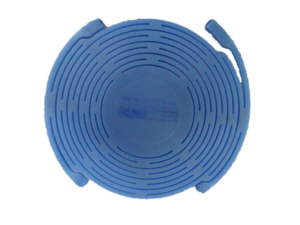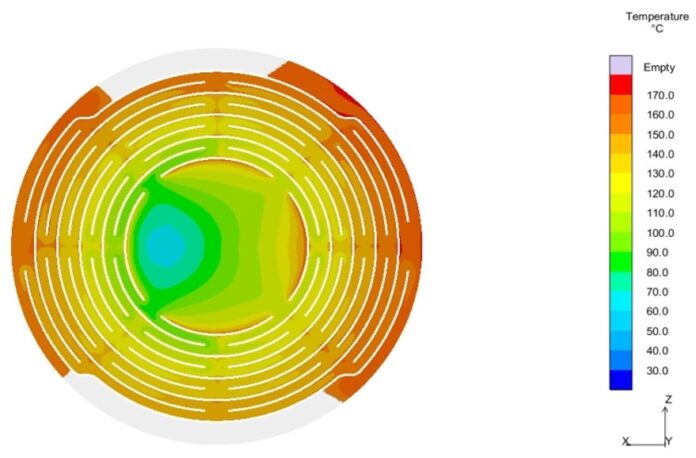An interview with Gustavo Mosquera, vice president of operations, Sigmasoft®
Flow analysis simulation allows engineers and designers to test, diagnose and improve the injection molding process, with the end result of optimizing production output. The simulation shows how the resin will fill the mold during the injection molding process. By understanding how the resin fills into the mold, designers can be in a better position to react quickly and anticipate mold specifications that may be problem areas – issues affecting the mold construction during production. Taking a mold from good to great is the basis of the simulation, with the result of producing a high-quality product, saving time and reducing overall mold cost.
 Virtual molding simulation allows a realistic 3D simulation of flows, heat flow and material characteristics for injection molding processes, creating reliable information that gives a base for reliable decision-making. Here are five common questions that arise among plastics processors.
Virtual molding simulation allows a realistic 3D simulation of flows, heat flow and material characteristics for injection molding processes, creating reliable information that gives a base for reliable decision-making. Here are five common questions that arise among plastics processors.
How does flow analysis simulation change manufacturers’ production processes?
Simulation has an impact on manufacturers – it allows them to work out ideas, problem-solve and resolve any potential issues that occur while designing the part and the mold. Knowing where to put a gate or heaters to help reduce filling or curing issues can be very helpful before molding. The simulation process helps and assists manufacturers in getting away from “hoping” that the project will work to “knowing” that it will. The goal in simulation is to get to first-shot success so that tooling doesn’t need to be reworked during the production cycle.
How does software simulation reduce or eliminate risk through the design phase and on the production line?
The biggest factor for manufacturers is confirming the design criteria that is very hard to change or alter after cutting the tool steel. One of the design factors is the gate location, especially on molds that are made up of multiple cavities. Once the gate has been placed and the runner designed, it’s very difficult to change these criteria without starting over. Making sure manufacturers know where the vents need to be placed, where the weld lines are located and how the parts fill can be very important in any mold design.
Secondly, being able to understand the size of the runner would be optimal. If the runner can be reduced in size, then manufacturers can save material and the overall cost of each part. From the mold design, it is critical for manufacturers to select the right mold materials and to get heaters laid out correctly with proper wattages, which in turn produces an even temperature distribution and consistent curing times.
What three primary factors are assessed during mold simulation?
Three main inputs should be assessed when evaluating a simulation: geometry, material and process.
Geometry
From the geometry side, manufacturers should locate the area where the gate should be placed in the part to reduce air bubbles. Locating where to gate the part is navigated by aiming to push the air to areas that easily can vent the air
out of the mold.
Material
Flow analysis simulation can evaluate how easy or how hard a material is to push through the cavity, and how the material cures. In a simulation, it’s easy to change the viscosity of a material and make a material cure faster or slower. This information can be used to develop a material that will fit a specific need. On the flip side, there’s an opportunity during the simulation to create a process that helps to utilize existing material to fit specific needs.
Process
Process in the mold flow simulation allows molders to see if there’s the use of too much pressure, which can lead to longer fill times or exceed the clamp force. With longer fill times, it is important to make sure that the part is not cured too much, which would lead to scorching or no fills. Temperature and fill speed can be adjusted to understand this better.
What are the inputs required to have a successful, productive simulation?
The inputs are very important to get good results from simulation, and that goes back to material data, geometry and process. In order to replicate an existing mold in production, a high level of detail on all these topics is needed so that no assumptions are made. While in the design stage, more assumptions can be okay since there might not be a worry about considering every little detail.
What training is available for engineers to understand what mold flow simulation software is telling them and how to adjust the design to eliminate potential issues?
SIGMSOFT® offers training to support manufacturers in how to use a simulation and merges it with how to make good decisions once data analysis is available from the simulation. The main point is that not every simulation needs the highest level of detail to get what a manufacturer wants out of it.
For example, if a manufacturer is worried about its mold curing time, a design of experiments can be run with different mold temperatures to understand the change it has on the curing time. Knowing the range can be important when quoting, while simulation software may be used to evaluate the legitimacy of a project. Later, the manufacturer and simulation software team can work on designing the tool to be able to meet the temperatures observed earlier in the process and match the desired curing time from when quoting occurred.
How has flow analysis simulation changed or improved over the last several years?
There has been an increased interest in what is happening to the mold – not just looking at the temperature of the mold but the stresses that are being observed and how those can impact the longevity of a tool. If components of the mold are breaking, evaluating the part is important – but only part of the question is being asked. This is a great direction for the industry because molders are being more considerate of everything that is important in a successful project. n
Since 1998, SIGMA, headquartered in Aachen, Germany, has been the pioneer and pacemaker of injection molding simulation technology. SIGMASOFT® Virtual Molding is developed in cooperation with MAGMA. SIGMASOFT® modules allow injection molders the ability to simulate their process and leave traditional trial-and-error in the past, using an intuitive graphical user interface and integrating multiple process-specific models and 3D-simulation technologies.
More information: www.sigmasoftvm.com.
Reprinted with permission from Inside Rubber.





